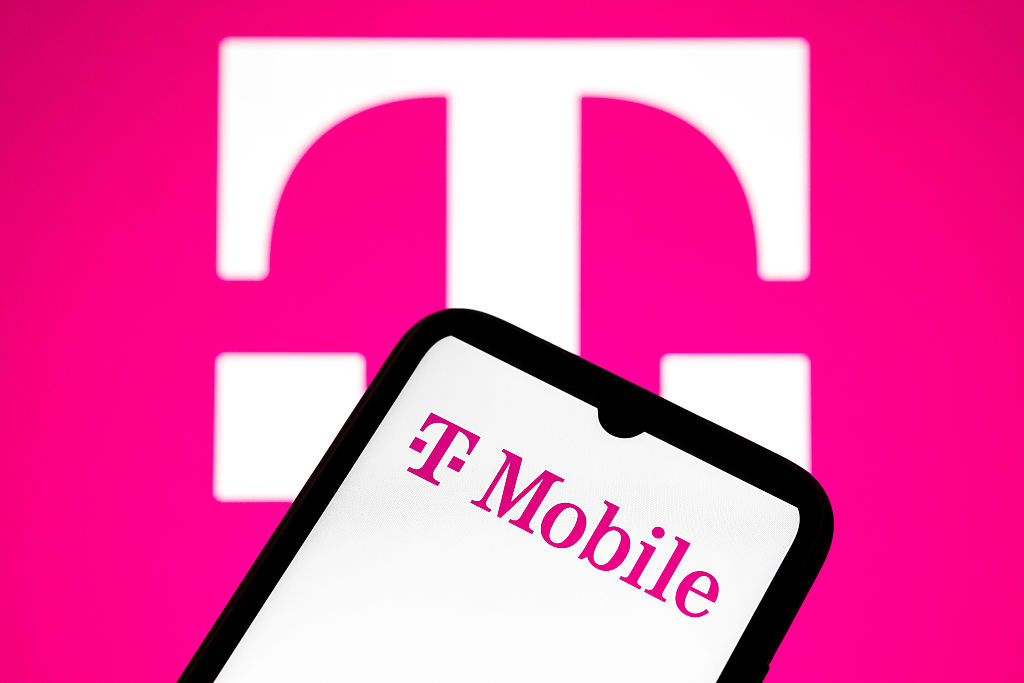What Trump Has Done With Medicare So Far
In Trump's second term in office, he has proposed or initiated several changes impacting Medicare and Medicaid. Here's a roundup.


President Donald Trump's second term has focused on deregulation, cost reduction through focused reforms, such as drug pricing, and upholding Medicare Advantage plans, while reversing several Biden-era policies.
The administration emphasizes protecting core Medicare benefits, which include no direct cuts to eligibility or beneficiary premiums. There are no direct cuts to eligibility, premiums, or coverage for traditional Medicare have been implemented (yet).
Key changes to the system include executive orders, Centers for Medicare and Medicaid Services (CMS) rule-making, and payment adjustments, which can be seen as aligning with Project 2025 (PDF) recommendations despite Trump publicly refuting the document.
From just $107.88 $24.99 for Kiplinger Personal Finance
Become a smarter, better informed investor. Subscribe from just $107.88 $24.99, plus get up to 4 Special Issues

Sign up for Kiplinger’s Free Newsletters
Profit and prosper with the best of expert advice on investing, taxes, retirement, personal finance and more - straight to your e-mail.
Profit and prosper with the best of expert advice - straight to your e-mail.
Impacts vary. Some changes in Trump's One Big Beautiful Bill (OBBB) lower costs for seniors, while others raise concerns about privatization and barriers to access to Medicare. However, although Trump promised sweeping changes to Medicare, only one change ultimately made it into the final version.
Medicare is the primary health insurance for adults age 65 and older. It also covers those with certain disabilities or illnesses, such as end-stage renal disease or Lou Gehrig’s disease. According to the most current data from the CMS, just over 68 million people were enrolled in Medicare, including both original Medicare and Medicare Advantage plans, for $1.03 trillion, or about 14% of total federal spending in 2024, according to the Kaiser Family Foundation.
A separate story looks at what Trump has done with Social Security so far.
Changes to Medicare in Trump's OBBB
Recently signed into law, Trump's OBBB eliminated many of the proposals in the House bill. Here's a look at what has changed for Medicare in the Act and other changes the administration has made so far.
Restrictions on eligibility
Current law excludes anyone in the U.S. from unlawfully receiving Medicare benefits. The law states that to be eligible to enroll in Medicare as a retiree, you must be 65, have worked for 10 years, and be either a U.S. citizen or have been a permanent resident of the U.S. for at least five consecutive years.
Trump's OBBB eliminates Medicare eligibility for some immigrants, including refugees, asylum seekers and those with Temporary Protected Status. The work and age requirements are unchanged.
The Senate bill allowed for certain immigrants from Haiti to be eligible for Medicare; they would join certain Cuban immigrants who have entered the U.S as defined in the Refugee Education Assistance Act of 1980. The Senate bill also terminated Medicare benefits no later than 18 months from enactment (of the legislation) for anyone who is currently receiving benefits but is no longer eligible under these changes. These provisions were included in the bill and signed into law.
Delayed rules for low-income enrollees
The fulfillment of two finalized rules that would have made it easier for very low-income Medicare enrollees to access Medicare Savings Programs (MSPs) has been delayed until October 1, 2034.
Potential future cuts to Medicare possible
If and when further congressional action is taken, the bill is projected to generate an estimated $490 billion in Medicare cuts between 2027 and 2034 due to a statutory pay-as-you-go (PAYGO) law.
Expansion of drug price negotiation program
In May, the Trump administration announced an expansion of the Inflation Reduction Act's drug price negotiation program to include Medicare Part B drugs for the first time. This action added to Trump's earlier efforts to negotiate drug prices during his first term, which were later rescinded by the Biden administration.
The administration blocks Medicare from covering obesity drugs
The Trump administration opted not to move forward with a proposal for Medicare and Medicaid to cover obesity treatments under the 2026 Medicare Advantage and Part D policies, citing cost concerns.
Under President Joe Biden, CMS had proposed reinterpreting the law to allow for the coverage of weight loss drugs for obese, rather than overweight patients. CMS has now decided not to move forward with that coverage.
However, Medicare Part D plans might cover certain "weight loss" drugs for other FDA-approved medical conditions, which include Wegovy, Zepbound, Ozempic, Mounjaro and Rybelsus.
Coverage is dependent on the beneficiary's specific Part D plan, and might require prior authorization or have other restrictions.
Read: Trump Administration Blocks Medicare From Covering Obesity Drugs — Why It Matters
Premiums on the rise
In 2026, Medicare beneficiaries will see an increase in their Part B premiums, a rise to $2,100 in the Part D out-of-pocket cost cap and a higher Part D deductible of $615. Other changes include potential reductions in negotiated drug prices, stricter rules for extra benefits in Medicare Advantage plans, as well as the introduction of enhanced security measures.
Part B premium: Expected to increase to approximately $206.50 per month for 2026.
Part D deductible: The maximum deductible will rise to $615. That's up from $590 in 2025.
Part D out-of-pocket cap: The cap on out-of-pocket prescription drug costs will be $2,100 for 2026.
Prescription drug costs
Prescription drug coverage will change for some high-cost drugs, while costs for others remain the same in 2026. The $35 monthly cap on insulin costs is expected to continue.
However, prices for some high-cost drugs might be negotiated further, which could lead to lower costs for enrollees. Auto-enrollment into the Medicare Prescription Payment Plan will be available for eligible beneficiaries and recommended vaccines for senior citizens will continue to be covered at no cost.
Medicare Advantage and Part D plans
Stricter rules might lead to fewer extra benefits for Medicare beneficiaries as plans face tighter restrictions on spending. For instance, the average monthly premium for Medicare Advantage plans is expected to increase to $12.91, while perks such as grocery cards and transportation might get cut.
Medicare and Medicaid job cuts
Proposed Medicare and Medicaid budget cuts for next year are projected to result in significant job losses, particularly within the health care sector
A recent report estimates that federal cuts could lead to cuts of 477,000 health care jobs by 2029, and combined with cuts to other programs like SNAP, the total job losses could exceed one million across various sectors.
“We aren't just reducing bureaucratic sprawl. We are realigning the organization with its core mission and our new priorities in reversing the chronic disease epidemic,” Health and Human Services Secretary Robert F. Kennedy Jr. said. “This department will do more — a lot more — at a lower cost to the taxpayer.”
Cuts to Medicaid?
Although not directly related to Medicare, it's worth mentioning that Medicaid, the state and federal program that provides health coverage for millions of low-income Americans (about 25% of the U.S. population), is at the center stage in Congress’s bid to pass Trump’s sweeping agenda.
In simple terms, Republicans want to reduce the cost of the $816 billion program as part of a long-term plan to cut federal spending and implement Trump’s tax cuts and his border and energy measures. Democrats adamantly oppose cuts to the program.
Major cuts to federal Medicaid spending are planned, notably through the One Big Beautiful Bill Act, which seeks to reduce spending by approximately $1 trillion over 10 years. These cuts are being implemented through several provisions, including a 15% reduction in federal funding and the elimination of enhanced funding for Medicaid expansion.
Work reporting requirements are also among the changes outlined. These changes could result in millions of people losing health insurance and will disproportionately affect states that previously expanded Medicaid.
Read: RFK Jr. Confused Medicare and Medicaid: Here's the Difference
OMB steps back funding freeze of Medicare grants and loans
In January, the Office of Management and Budget (OMB) issued a memo to temporarily pause the disbursement of federal grants and loans, including those for Medicare.
However, before carrying through with the action, the OMB faced legal challenges and was blocked by federal judges. This led to confusion and concerns about potential impacts on Medicare funding.
As of late February, a federal judge continued to block the OMB from freezing federal assistance, delivering another blow to the Trump administration's ongoing efforts to shrink federal spending.
For Medicare and other programs that provide direct benefits to individuals, the original exemption holds. The controversy and legal challenges surrounding the funding freeze did not affect these benefits, and they have continued uninterrupted.
Read: What a Federal Grants Pause Could Have Meant for Social Security and Medicare
Related Content
Profit and prosper with the best of Kiplinger's advice on investing, taxes, retirement, personal finance and much more. Delivered daily. Enter your email in the box and click Sign Me Up.

For the past 18+ years, Kathryn has highlighted the humanity in personal finance by shaping stories that identify the opportunities and obstacles in managing a person's finances. All the same, she’ll jump on other equally important topics if needed. Kathryn graduated with a degree in Journalism and lives in Duluth, Minnesota. She joined Kiplinger in 2023 as a contributor.
-
 The Retirement Donor's Checklist: Key Deadlines by Gift Type
The Retirement Donor's Checklist: Key Deadlines by Gift TypeRetirees have some charitable contribution options that can help avoid spikes in income from RMDS and capital gains.
-
 Cooler Inflation Supports a Relief Rally: Stock Market Today
Cooler Inflation Supports a Relief Rally: Stock Market TodayInvestors, traders and speculators welcome much-better-than-hoped-for core CPI data on top of optimism-renewing AI earnings.
-
 Are T-Mobile's Prepaid Perks a Home Run or a Strikeout?
Are T-Mobile's Prepaid Perks a Home Run or a Strikeout?T-Mobile's prepaid lineup promises MLB.TV, T-Mobile Tuesdays and hotspot data. But do the perks make it worth switching?
-
 The Retirement Donor's Checklist: Key Deadlines by Gift Type
The Retirement Donor's Checklist: Key Deadlines by Gift TypeRetirees have some charitable contribution options that can help avoid spikes in income from RMDS and capital gains.
-
 I'm 73, Retired, and Dreading Winter, But I Can't Afford to Be a Snowbird. Help!
I'm 73, Retired, and Dreading Winter, But I Can't Afford to Be a Snowbird. Help!How can a snowbird wannabe warm up without the expense? We asked professional wealth planners for advice.
-
 5 Smart Things to Do With Your Year-End Bonus, From a Financial Professional
5 Smart Things to Do With Your Year-End Bonus, From a Financial ProfessionalAfter you indulge your urge to splurge on a treat, consider doing adult things with the extra cash, like paying down debt, but also setting up a "fun fund."
-
 Are You a Gen X Investor? Here's How You Can Protect Your Portfolio From an AI Bubble
Are You a Gen X Investor? Here's How You Can Protect Your Portfolio From an AI BubbleAmid talk of an AI bubble, what's the best course of action for investors in their 50s and 60s, whose retirement savings are at risk from major market declines?
-
 Hey, Retirees: Put Your Charitable Gifts in a Donor-Advised Fund (and Enjoy Your Tax Break)
Hey, Retirees: Put Your Charitable Gifts in a Donor-Advised Fund (and Enjoy Your Tax Break)A donor-advised fund is a simple (really!), tax-smart strategy that lets you contribute a large, tax-deductible gift now and then distribute grants over time.
-
 The 7-Month Deadline That Determines Your Lifetime Medicare Premiums
The 7-Month Deadline That Determines Your Lifetime Medicare PremiumsUnderstanding Medicare enrollment is crucial, as missing deadlines can lead to permanent late enrollment penalties and gaps in coverage.
-
 If You're a U.S. Retiree Living in Portugal, Your Tax Plan Needs a Post-NHR Strategy ASAP
If You're a U.S. Retiree Living in Portugal, Your Tax Plan Needs a Post-NHR Strategy ASAPWhen your 10-year Non-Habitual Resident tax break ends, you could see your tax rate soar. Take steps to plan for this change well before the NHR window closes.
-
 Could Target-Date Funds With Built-In Income Guarantees Be the Next Evolution in Retirement Planning?
Could Target-Date Funds With Built-In Income Guarantees Be the Next Evolution in Retirement Planning?With target-date funds falling short on income certainty, retirement plans should integrate guaranteed income solutions. Here is what participants can do.